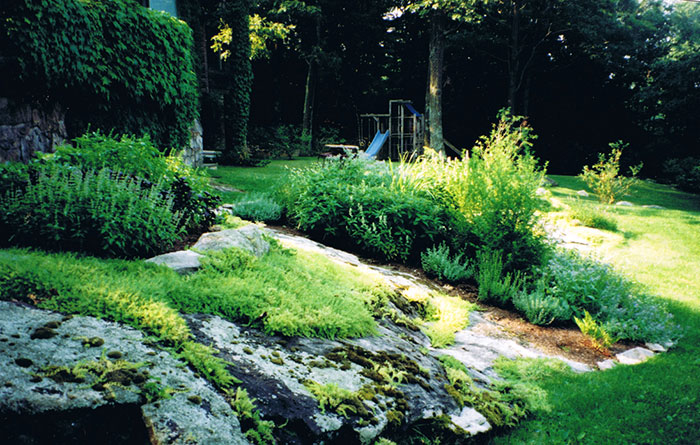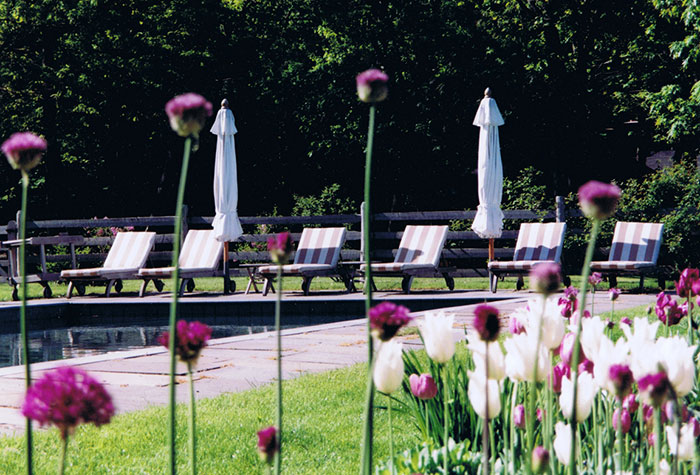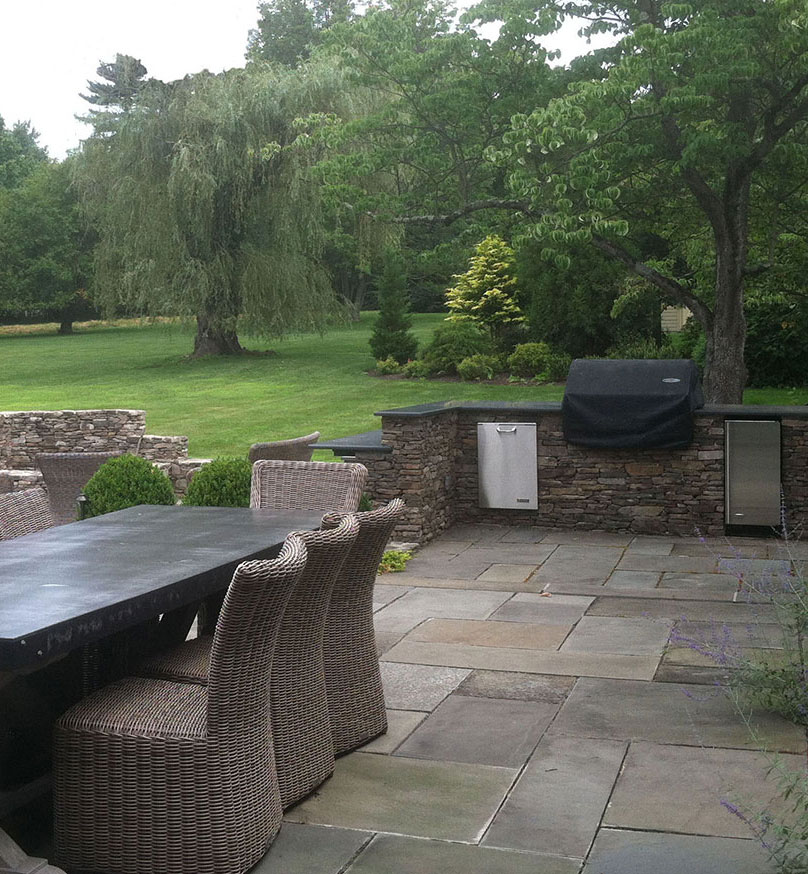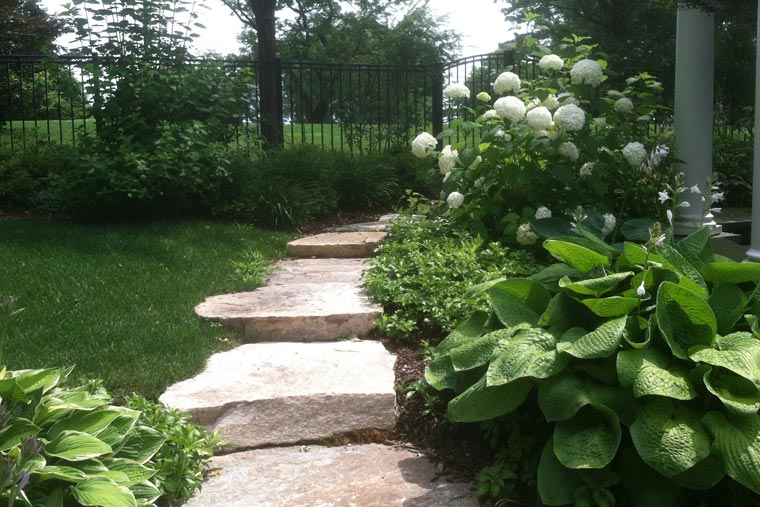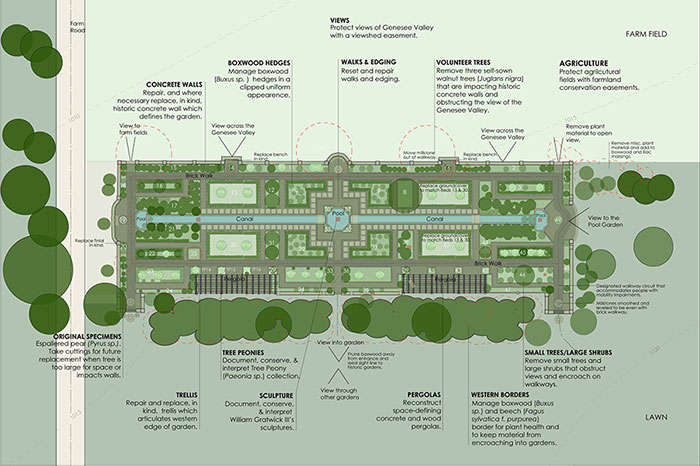Our Services
Site Analysis
An important discovery phase, site analysis examines the property’s existing conditions including any existing buildings, architectural styles and any historic features, and other structures. It looks to understand the property’s ecological systems and discover its unique features for design opportunities. These include:
- water, drainage, and wetlands
- soils, geology, and topography
- habitat and communities of plants, animals, birds, and other pollinators
- solar orientation, wind, and micro-climates
Master Planning
The master plan takes it cues from the site analysis which may suggest outdoor spaces and their ordering. Discoveries may reveal a view to frame or rock outcroppings to highlight or avoid. An old shed can be adapted for a new yoga and meditation space and a barn reused for a library. There may be opportunities to improve biodiversity for a flourishing garden.
The master plan integrates and organizes the client’s program ideas with the site information, conceptually and schematically, to determine the feasibility of the design. The master plan is not a construction document. It does not show construction details or specific plantings. Master plans provide guidance for the client’s budget and the rest of the design process whether as one large project or as a phased implementation over years.
Some client program ideas may include the locating and positioning of:
- Primary buildings and outbuildings –
- residences, garages, pool houses, pavilions, greenhouses, conservatories, potting sheds, barns, worksheds
- follies, yoga, meditation, and art studios
- Other built structures –
- swimming pools and spas, ponds, tennis and bocce courts, and other play areas
- patios and terraces, pergolas, outdoor kitchens and grill areas, fireplaces and firepits
- driveways, parking areas, courtyards
- walls, steps, walks, and trails
- Planting areas for gardens, habitat protection or restoration –
- flower, vegetable, herb, fruit, and orchard
- meadow, hedgerow, woodland
- wetland and shoreline buffers, conservation plantings, rain gardens
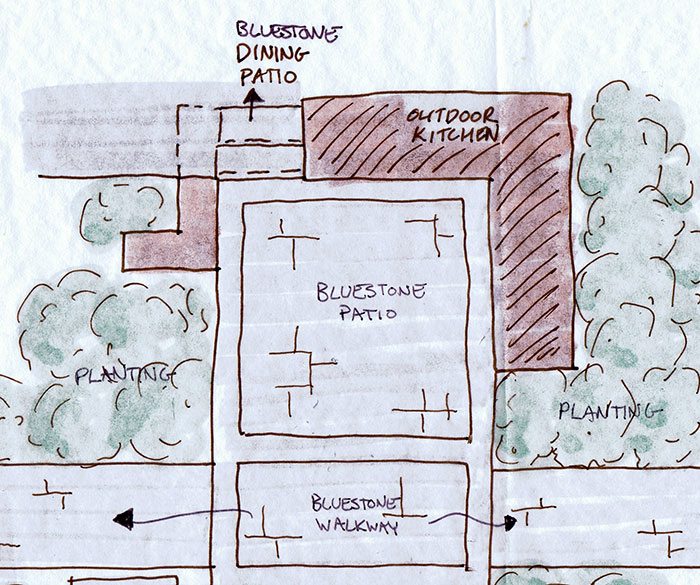
Garden and Planting Design
Garden dreams benefit from both our landscape architecture experience and our deep plant knowledge. We’ll unite the garden areas with the architecture for a seamless flow from the indoors to the outdoors. We design outdoor spaces in detail. Garden ideas may include walks, steps and walls, patios and terraces, pools, spas, ponds, and fountains, fireplaces and fire pits, and outdoor kitchens and grill areas.
We love plants! With more than 20 years advising clients on organic, sustainable gardening principles and techniques combined with classic horticultural training and public garden work, we know plants. For decades, we’ve created designs with native and welcome adapted plants to enhance a garden’s sensory appeal and biodiversity. We’ve included them in quiet and serene gardens, exuberant flower borders, and in wilder habitats. Whether a client desires a formal garden or a naturalistic sanctuary, we help them realize their garden dream.
Construction Documents
In this phase, the design develops with custom details for actual construction. Materials and finishes are selected and number and size of particular plants are specified. The client will have documents for contractors to provide bids for building the job. Drawings may include some or all of the following:
- layout and grading plans
- materials selection
- hardscape details
- planting plans
Historic Preservation
With cultural landscape preservation and conservation, we help clients understand the stories of their landscape so they can make informed decisions and plan for the future. We'll study the site’s history and existing conditions, analyze and evaluate the landscape's integrity to express that history, and while working with the client, provide guidance on the key features and direction. We'll recommend treatment options for small areas and the overall property so that the landscape can function for years to come.
- Cultural landscape reports and surveys
- Landscape preservation, restoration, and rehabilitation plans
- National and State Register of Historic Places nominations
- Historical research and writing
- Writing for interpretive media
